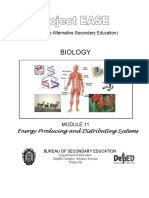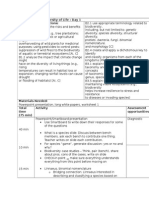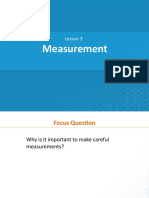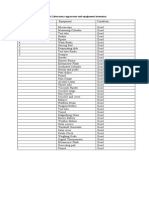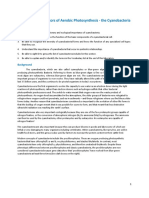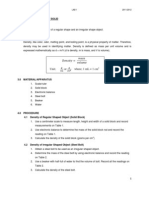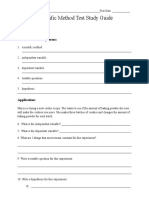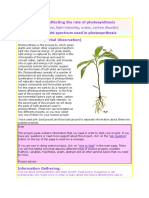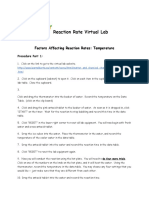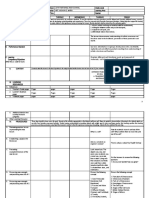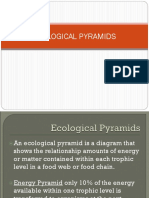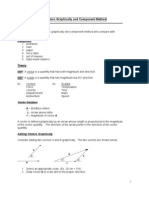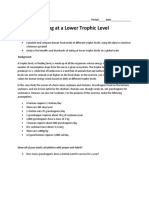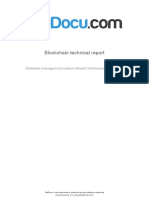0% found this document useful (0 votes)
2K views4 pagesTrophic Levels Lab Report
This lab worksheet guides students through an investigation of optimal food sources for a farmer based on trophic levels and energy transfer. Students are asked to calculate the biomass and nutritional requirements at each trophic level to support the farmer eating chickens, grasshoppers, or soybeans directly. They then construct a biomass pyramid and discuss pros and cons of eating at a lower trophic level. The objective is to determine the best food option based on energy efficiency through the calculations and analysis.
Uploaded by
Sabrina ChangCopyright
© © All Rights Reserved
We take content rights seriously. If you suspect this is your content, claim it here.
Available Formats
Download as DOCX, PDF, TXT or read online on Scribd
0% found this document useful (0 votes)
2K views4 pagesTrophic Levels Lab Report
This lab worksheet guides students through an investigation of optimal food sources for a farmer based on trophic levels and energy transfer. Students are asked to calculate the biomass and nutritional requirements at each trophic level to support the farmer eating chickens, grasshoppers, or soybeans directly. They then construct a biomass pyramid and discuss pros and cons of eating at a lower trophic level. The objective is to determine the best food option based on energy efficiency through the calculations and analysis.
Uploaded by
Sabrina ChangCopyright
© © All Rights Reserved
We take content rights seriously. If you suspect this is your content, claim it here.
Available Formats
Download as DOCX, PDF, TXT or read online on Scribd
/ 4





